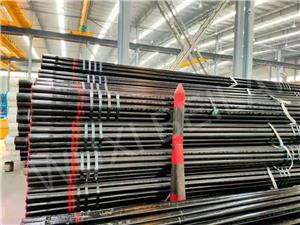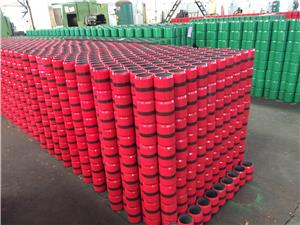Detailed explanation of the process of externally thickening EUE oil pipes
In order to improve the mechanical properties and connection strength of oil pipes and solve the problems of strength and durability of oil pipes under high pressure and harsh environments, the External Upset End (EUE) process is widely used. This process significantly improves the mechanical properties and connection strength of the oil pipe by increasing the thickness at the end of the oil pipe, ensuring its stable operation in high-stress environments. This article will introduce in detail the process steps, key technical parameters and wide application of externally thickened EUE oil pipes.
1. Process purpose
The main purpose of the external thickening EUE oil pipe process is to increase the thickness at the end of the oil pipe to achieve the following goals:
Enhanced strength: Improve the mechanical strength and pressure resistance of the pipe end and reduce the risk of joint rupture.
Improved connection reliability: The externally thickened pipe end can form a stronger connection with the coupling, reducing the risk of leakage.
Extend service life: Increase wear resistance and corrosion resistance, allowing the oil pipe to operate stably for a longer period of time in harsh environments.
2. Process steps
1. Raw material preparation
First, choose high-quality steel as the base material of the oil pipe. Materials need to have good mechanical properties and corrosion resistance to ensure they can withstand high pressures and harsh environments.
2. Pipe end pretreatment
Preliminary treatment is performed on the end of the oil pipe, including cutting, cleaning and inspection to ensure that the surface is free of impurities and defects. This can lay a good foundation for subsequent thickening processing.
3. Thickening
Heating: Heating the end of the oil pipe to the appropriate temperature to improve the plasticity of the material. Induction heating equipment is often used to ensure even heating.
Forging: The heated oil pipe end is forged using forging equipment to increase the thickness of the end. The forging process requires precise control of pressure and speed to ensure uniformity and consistency of the thickened parts.
Shaping: Shape the end of the thickened oil pipe to ensure that its size and shape meet the design requirements. The shaping process is usually completed on special equipment to ensure high precision.
4. Heat treatment
The thickened oil pipe is subjected to heat treatment, such as quenching and tempering, to eliminate internal stress and further improve the mechanical properties of the material. The parameters of heat treatment (such as temperature, time, cooling rate) need to be strictly controlled to obtain the best mechanical properties.
5. Finishing
The end of the thickened oil pipe is finely processed to ensure that its dimensional accuracy and surface finish meet the requirements. This step includes turning, grinding and other processes to ensure that the pipe end accurately matches the coupling.
6. Testing
Strict quality testing is carried out on the processed oil pipes, including dimensional testing, non-destructive testing (such as ultrasonic testing) and mechanical performance testing, to ensure that they comply with relevant standards and requirements. Testing is an important part of ensuring product quality.
7. Surface treatment
As needed, the oil pipes are surface treated, such as coated with anti-corrosion coatings, to improve their corrosion resistance. Surface treatment can extend the service life of oil pipes, especially in highly corrosive environments.
3. Key technical parameters
Heating temperature and time: Heating temperature and time need to be precisely controlled according to material characteristics and process requirements to ensure the plasticity of the material during the forging process.
Forging pressure and speed: The pressure and speed of the forging equipment need to be adjusted according to the specifications and requirements of the pipe to ensure the uniformity and strength of the thickened part.
Heat treatment process parameters: The temperature, time and cooling rate of heat treatment need to be strictly controlled to ensure that the mechanical properties of the material reach the best state.




